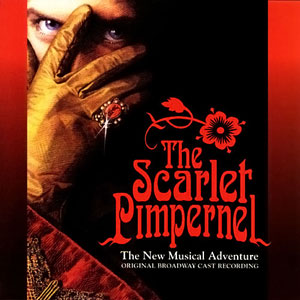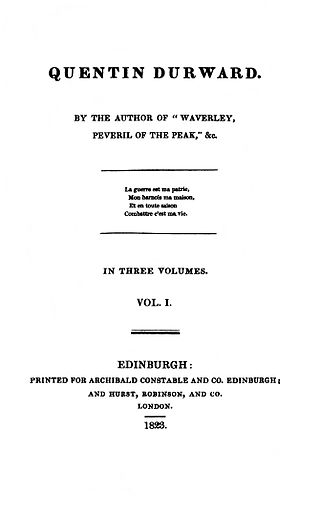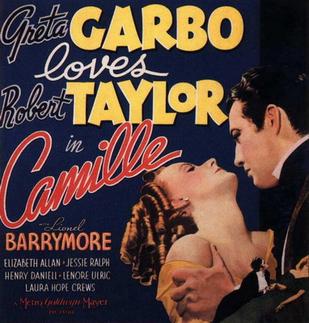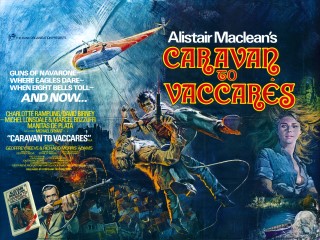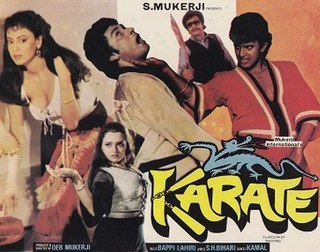Plot
The story is principally set in and near Paris between 1789 and 1792. Yannick "Yann" Margoza, an orphaned gypsy boy, who can throw his voice, read minds and predict the future, works in the Théâtre du Temple, with his guardians Topolain a magician, and Têtu a dwarf who can move objects with his mind. The trio is invited by the mysterious and sinister Count Kalliovski to perform at the chateau of the Marquis de Villeduval for him and his guests. Unbeknownst to them, Count Kalliovski is an old enemy from Têtu and Topolain's past. They run into him in the library of the chateau but it is too late for them to escape so they decided to leave the bullet catch out of the performance. During one trick with the pierrot, Yann has a disturbing premonition in which the guests are all carrying their bloodied severed heads. Têtu and Topolain hurriedly try to end the show but Kalliovski insists on performing the bullet catch. He tampers with the pistol which instantly kills Topolain. While hiding from Kalliovski, Yann meets the Marquis' abused and neglected daughter Sido, and is instantly smitten by her. After escaping back to Paris with Sido's help via a secret passage in her chamber, Têtu warns Yann he is in grave danger and insists he travel to London. Yann is bitter about this but eventually agrees. Têtu's friend, Monsieur Cordell, arranges for Yann to stay with Henry and Juliette Laxton in London, who happen to be Sido's maternal aunt and uncle. Têtu also tells Cordell that Kalliovski is actually a former Russian gypsy and secretly Yann's father; he was obsessed with Yann's mother Anis, who was working with Têtu and Topolain in circus. The trio eventually fled to escape his wrath but he tracked them down and murdered her after she rejected him. While trying to get Yann to safety, Têtu is shot by Kalliovski's henchman, Milkeye, while Yann is smuggled out of the country by Cordell and Mr Tull. Despite the Laxtons' kindness to him, Yann is unhappy and homesick. After attempting to run away, he rescues a poor but eccentric actor named Mr Trippen from being robbed by throwing his voice to distract the thugs. Mr. Laxton apologises to Yann and employs Trippen as his new tutor. As Yann grows older he successfully adapts to English society but seems to have lost his gift to throw his voice and read minds. He becomes keen to learn about Têtu's telekinetic abilities, known as the 'threads of light'. One day, he meets a family of gypsies: Talo Cooper, his wife Orlenda, and his grandfather, Tobias. After Orlenda reads his fortune, Tobias successfully teaches Yann how to see and control the threads of light and gives him a magic talisman. Yann also receives news from Cordell that Têtu is alive. At the same time, the body of an old acquaintance of the Marquis is found by the Thames, and Yann suspects Kalliovski after Cordell notices his necklace around the victim's neck. Yann and the Laxton's also learn that Kalliovski intends on making Sido his bride, prompting Yann to return to France and rescue her.
During Yann's absence, the political situation in France worsens with the impending threat of The French Revolution. Maître Tardieu, the Marquis' lawyer visits him one day warning him that he is bankrupt, and delivers a letter from Kalliovski demanding him to repay his debts, and asking for Sido's hand in marriage. The Marquis initially refuses until he is threatened with a cryptic warning: Remember your wife. Unwilling to suffer Kalliovski's wrath, he reluctantly agrees. Sido is understandably horrified by this arrangement, but is powerless to against both Kalliovski and the Marquis' wishes. During her father's fête one night, she overhears a heated conversation between the Marquis and his friend, Madame Perrien. Fearful for her life, she begs him to lend her money to repay her debts to Kalliovski. However, the Marquis refuses and ignores her warning that his own dealings with the Count will backfire. Perrien is indeed later murdered by Kalliovski, much to the Marquis' horror. He gradually descends further and further into madness. The chateau is soon destroyed by a mob, prompting Sido and her father to escape through a secret tunnel with the help of their servants and are given refuge by another of The Marquis' friend, the Duchesse de Lamantes.
Yann eventually returns to Paris and his old home, now renamed the Théâtre de la Liberté, and reunites with Têtu, Didier, the caretaker of the theatre, and Monsieur Aulard, the manager. Têtu is overjoyed to see him and that he too can see the threads of light, and finally tells him the truth about his father. Yann and Sido are briefly reunited and realises that he can read her mind again. He tries to persuade her to forget the Marquis and come back to England with him. She explains her situation including her engagement to Kalliovski, and that the Duchesse had advised her and her father to find Mr. Tull who would smuggle them out of the country. Yann, however, remembers his encounter with Tull the night he was smuggled out of France and warns Sido not to trust him and let him take her instead. He and Têtu later meet with Maître Tardieu who informs them that the Marquis wrote instructing him to end Sido's betrothal, but when he informed Kalliovski he received no reply. He gives them a bag of jewels that belonged to Sido's mother, Isabelle Gautier, and Armand de Villeduval, the Marquis' half brother. Upon noticing seven familiar red garnets, Têtu realises that Isabelle and Armand were murdered by Kalliovski on the Marquis' behalf. Yann attempts to see Sido again the next day but is too late as she and the Marquis have already been captured by Tull who was working for Kalliovski.
During the night, Kalliovski visits an ill and exhausted Sido in prison and blackmails her into marrying him. He then taunts her and threatens her with rape before she passes out. Kalliovski arranges to have her moved to her own cell and nursed back to health. Meanwhile, Yann and Maître Tardieu meet with her in prison however, the ever gentle and good-hearted Sido cannot bring herself to abandon her insane and helpless father. After she is taken away, Maître Tardieu reveals that Isabelle and Armand were lovers –therefore, Sido is not the daughter of the Marquis, but of Isabelle and Armand; the pair had been attempting to elope to London with a three-year-old Sido at the time of their murder. This gives Yann and Têtu an idea that might help change Sido's mind. They invite Kalliovski to a performance with a pierrot to distract him while Yann and Didier attempt to break into his apartmento find the love letters from Sido's parents. He discovers a room full of automatons made from Kalliovski's murdered victims known as 'The Sisters Macabre' which he uses to hide all his secrets. He also discovers that Kalliovski can also has telekinesis, only known as the 'Threads of Darkness'. Milkeye suddenly emerges and shoots Yann in the shoulder. Although weak, he uses his new magic abilities to make The Sisters Macabre talk. One of them opens a draw in their chest revealing the letters from Sido's parents and Kalliovski's 'Book of Tears' containing all the names of those who had borrowed money from him. He passes out but is rescued by Didier and taken back to the theatre where Têtu treats his wound.
Meanwhile, Sido finally decides that the Marquis isn't worth trying to help and that should Yann come for her, she will go with him. She is spared from the bloodshed the next day when she is tried but fortunately found innocent, only to be abducted by Kalliovski. Didier manages to stop his carriage by drawing a mob to it allowing him and Yann to rescue Sido. Yann confesses that although he loves her, Sido's family are waiting for her in London as he is staying behind to help more aristocrats escape from France. Sido doesn't want to be separated from Yann again but eventually agrees and he gives her his talisman. Kalliovski is revealed to have survived the mob. Sickened and enraged that he was defeated by a son he never wanted, he vows vengeance.


